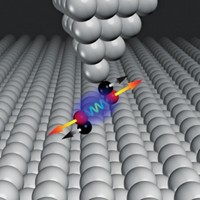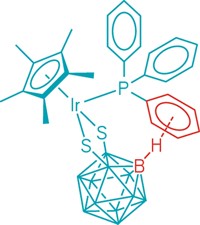Advertisement
Grab your lab coat. Let's get started
Welcome!
Welcome!
Create an account below to get 6 C&EN articles per month, receive newsletters and more - all free.
It seems this is your first time logging in online. Please enter the following information to continue.
As an ACS member you automatically get access to this site. All we need is few more details to create your reading experience.
Not you? Sign in with a different account.
Not you? Sign in with a different account.
ERROR 1
ERROR 1
ERROR 2
ERROR 2
ERROR 2
ERROR 2
ERROR 2
Password and Confirm password must match.
If you have an ACS member number, please enter it here so we can link this account to your membership. (optional)
ERROR 2
ACS values your privacy. By submitting your information, you are gaining access to C&EN and subscribing to our weekly newsletter. We use the information you provide to make your reading experience better, and we will never sell your data to third party members.
Photonics
Surface plasmons drive single-bond chemistry
Method can be used to pinpoint reactions to a designated region within a single molecule
by Mitch Jacoby
January 23, 2022
| A version of this story appeared in
Volume 100, Issue 3

The energy of electron vibrations can be focused on a single bond in a complex molecule, selectively driving chemical reactions just at that spot, according to a study detailing the process (J. Am. Chem. Soc. 2022, DOI: 10.1021/jacs.1c11547). The method can be used to tailor-make nanoscale devices and to mediate chemical reactions that are inaccessible via standard thermal means. Surface plasmons, or collective electron vibrations, can be triggered by light interacting with nanosized structures on metal surfaces. Researchers have previously tapped this effect to drive chemical reactions. Some scientists have used scanning tunneling microscopes (STMs) to confine the plasmon to the region near the instrument tip, limiting the number of molecules energized by the plasmonic field. Linfei Li, Nan Jiang, and coworkers at the University of Illinois Chicago wondered whether plasmons could be confined to a much finer scale—to just one bond in a single molecule that has several bonds of that type. The team experimented with a copper-bound porphyrin molecule that has four equivalent trimethylsilyl (TMS) groups. They brought the STM’s silver tip extremely close (about 1.5 Å) to one of the TMS lobes, confining the plasmon until it broke the C–Si bond tethering that lobe to the molecule. Before-and-after images confirm the method’s exquisite dexterity.





Join the conversation
Contact the reporter
Submit a Letter to the Editor for publication
Engage with us on Twitter